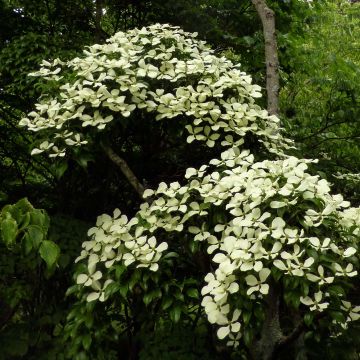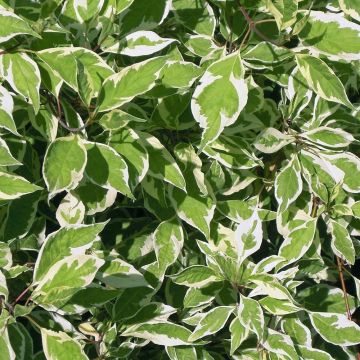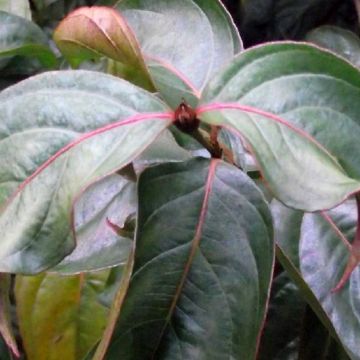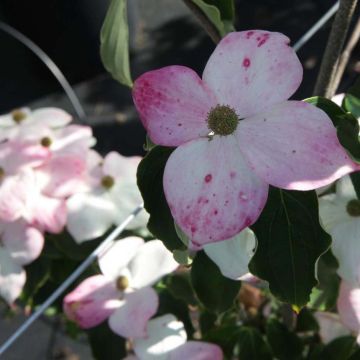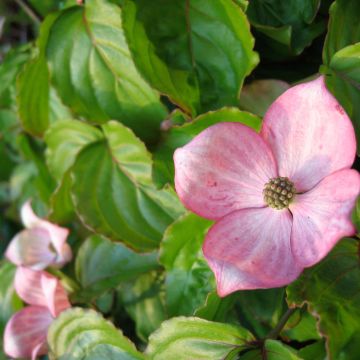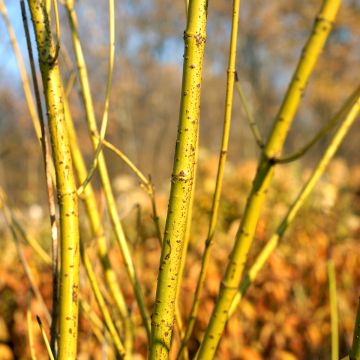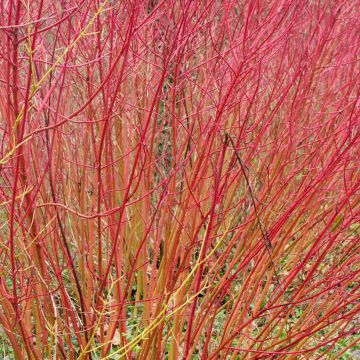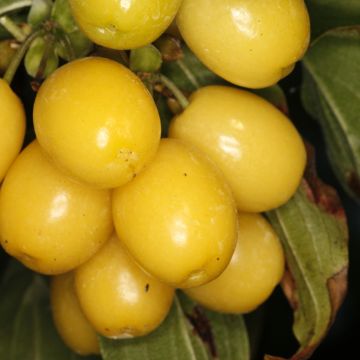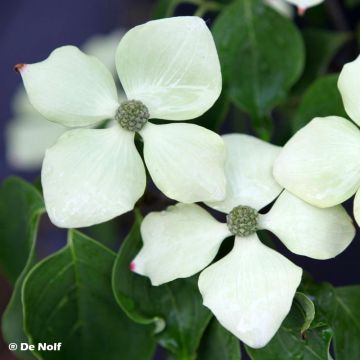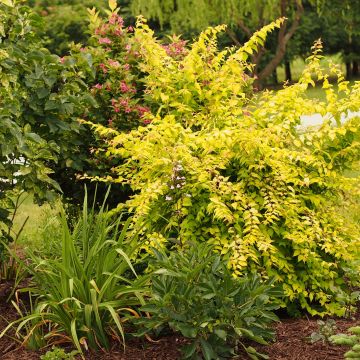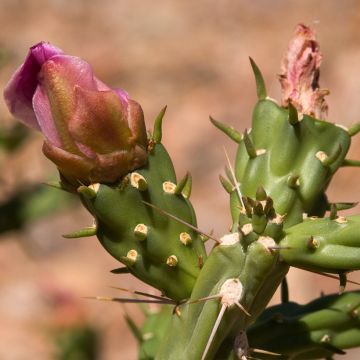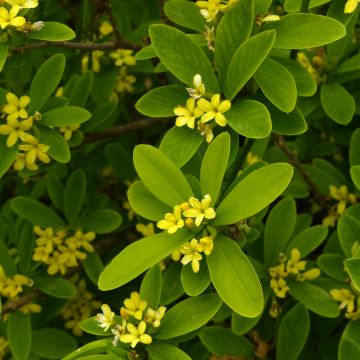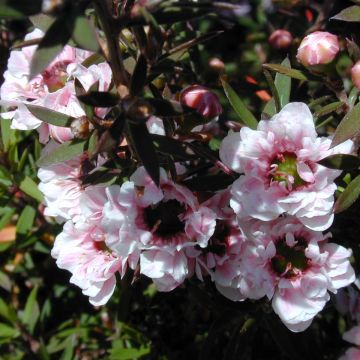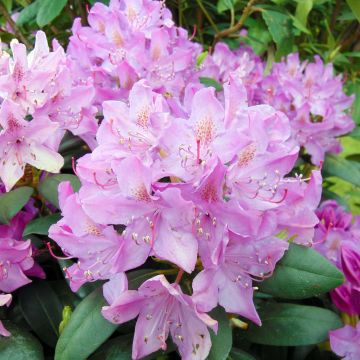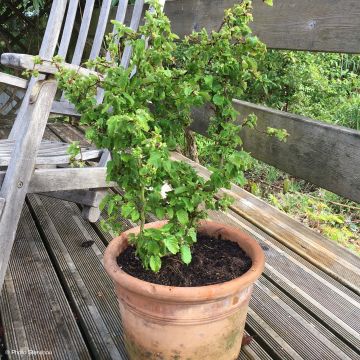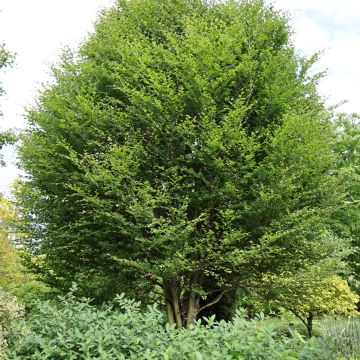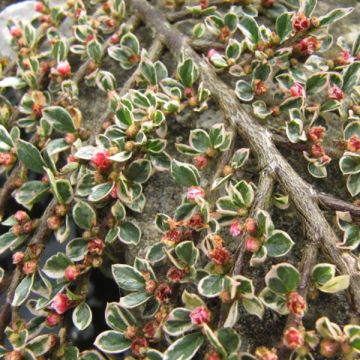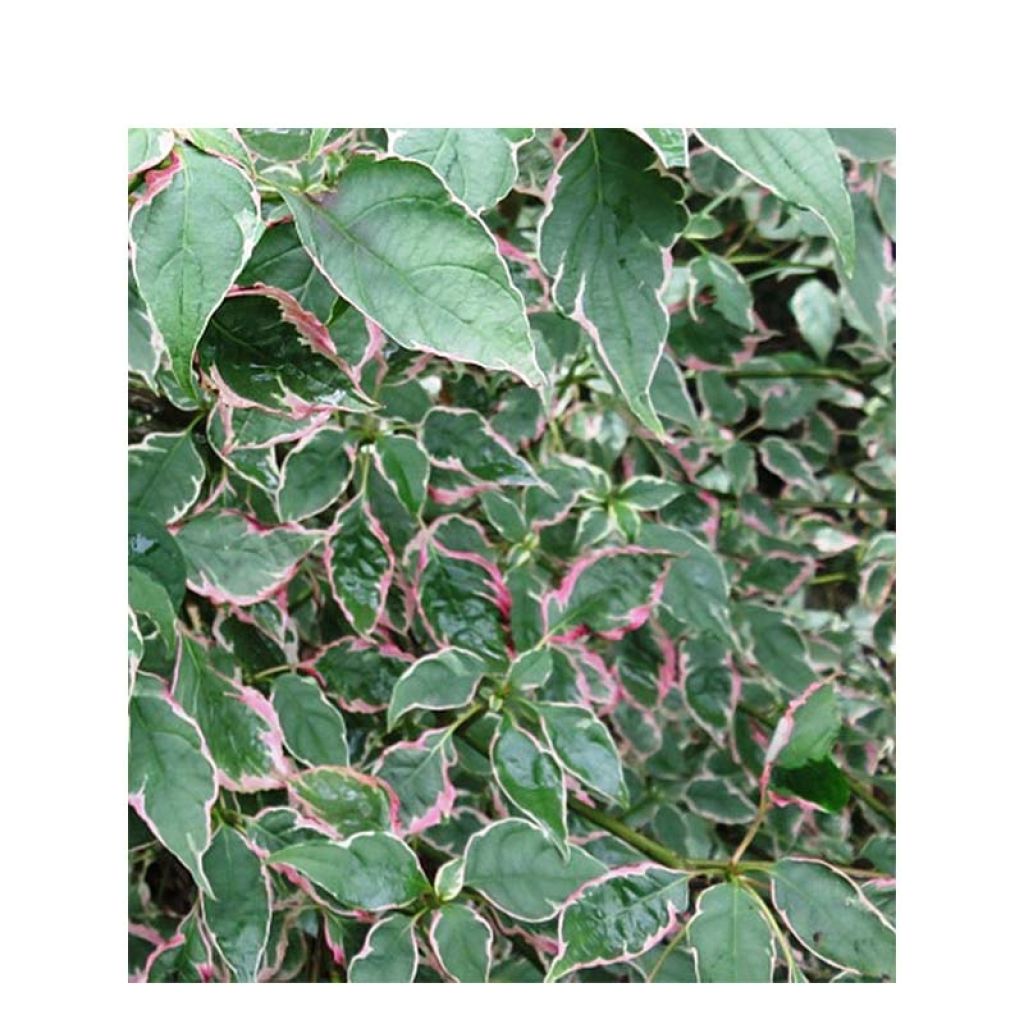

Cornus alternifolia Pinky Spot Minpinky - Pagoda Dogwood
Cornus alternifolia Pinky Spot Minpinky - Pagoda Dogwood
Cornus alternifolia Pinky Spots® 'Minpinky'
Pagoda Dogwood
This item cannot be shipped to the selected country
Delivery charge from €5.90
More information
Schedule delivery date,
and select date in basket
This plant carries a 24 months recovery warranty
More information
We guarantee the quality of our plants for a full growing cycle, and will replace at our expense any plant that fails to recover under normal climatic and planting conditions.
From €5.90 for pickup delivery and €6.90 for home delivery
Express home delivery from €8.90.
Does this plant fit my garden?
Set up your Plantfit profile →
Description
Cornus alternifolia Pinky Spot 'Minpinky' is a beautiful variety of pagoda dogwood selected for its beautiful variegated foliage and vigorous growth. It quickly forms a bushy shrub with a graceful habit, with red horizontal branches and stunning tricoloured foliage in spring. Throughout the seasons, the foliage takes on fantastic shades. Its summer flowering is attractive to bees and is followed by purple berries that birds love. Give it a prominent place in a small garden or at the front of a large shrub border!
Cornus alternifolia Pinky Spot belongs to the Cornaceae family. It is native to the eastern United States and Canada, ranging from western Newfoundland to southern Manitoba and Minnesota, and from the southern to northern regions of Florida and Mississippi. It can be found growing under deciduous trees, on forest edges, and near swamps, thriving in harsh and contrasting climates that demonstrate its robustness.
The cultivar Pinky Spot was selected in 2007 by Minier Nurseries. The shrub has a bushy habit and well-branched structure from the base. It will reach about 3.50 metres (11 feet) in height, with a spread of 3 metres (10 feet), sometimes more depending on the growing conditions. Its growth rate is quite fast. The deciduous foliage emerges variegated in green, pink, and white in spring, turns green in summer, and becomes marginate with violet before leaf fall. The leaves are entire, distinctly veined and undulate, measuring approximately 8 to 10cm (3 to 4in) in length. Its flowering is quite discreet, with small cream-white flowers arranged in clusters measuring 10 to 15cm (4 to 6in) in diameter, fragrant and attractive to bees. It is followed by a fruiting of blue-black berries on red stems, containing oily seeds. These fruits turn purplish when ripe and are highly appreciated by songbirds.
No matter the size or style of the garden, there will always be a dogwood to provide a beautiful decoration. The Pinky Spot dogwood offers a constantly changing spectacle throughout the year, deserving to be planted in isolation. It will create beautiful autumn borders, mixed hedges with witch hazels or Japanese maples in acidic soil, or on the edge of woodland areas in the company of Hydrangea quercifolia or winged Euonymus in neutral soil. All these shrubs are perfect for creating a transition with the countryside. As it thrives near water, it can be planted alongside Cornus stolonifera 'Flaviramea' with yellow bark, behind a foreground of Astilbes, not far from a pond.
Report an error about the product description
Cornus alternifolia Pinky Spot Minpinky - Pagoda Dogwood in pictures


Plant habit
Flowering
Foliage
Botanical data
Cornus
alternifolia
Pinky Spots® 'Minpinky'
Cornaceae
Pagoda Dogwood
Cultivar or hybrid
Other Cornus
Planting and care
Cornus alternifolia Pinky Spot will thrive in a cool, fertile and humus-rich soil, even moist, neutral or slightly acidic. It is a bush that thrives in cool climates and tolerates heat and drought poorly. Plant it from November to March, in a sunny position to accentuate the foliage colours, or at a push in bright partial shade. However, avoid scorching exposures that can damage its foliage.
Planting period
Intended location
Care
This item has not been reviewed yet - be the first to leave a review about it.
Spring-flowering shrubs
Haven't found what you were looking for?
Hardiness is the lowest winter temperature a plant can endure without suffering serious damage or even dying. However, hardiness is affected by location (a sheltered area, such as a patio), protection (winter cover) and soil type (hardiness is improved by well-drained soil).

Photo Sharing Terms & Conditions
In order to encourage gardeners to interact and share their experiences, Promesse de fleurs offers various media enabling content to be uploaded onto its Site - in particular via the ‘Photo sharing’ module.
The User agrees to refrain from:
- Posting any content that is illegal, prejudicial, insulting, racist, inciteful to hatred, revisionist, contrary to public decency, that infringes on privacy or on the privacy rights of third parties, in particular the publicity rights of persons and goods, intellectual property rights, or the right to privacy.
- Submitting content on behalf of a third party;
- Impersonate the identity of a third party and/or publish any personal information about a third party;
In general, the User undertakes to refrain from any unethical behaviour.
All Content (in particular text, comments, files, images, photos, videos, creative works, etc.), which may be subject to property or intellectual property rights, image or other private rights, shall remain the property of the User, subject to the limited rights granted by the terms of the licence granted by Promesse de fleurs as stated below. Users are at liberty to publish or not to publish such Content on the Site, notably via the ‘Photo Sharing’ facility, and accept that this Content shall be made public and freely accessible, notably on the Internet.
Users further acknowledge, undertake to have ,and guarantee that they hold all necessary rights and permissions to publish such material on the Site, in particular with regard to the legislation in force pertaining to any privacy, property, intellectual property, image, or contractual rights, or rights of any other nature. By publishing such Content on the Site, Users acknowledge accepting full liability as publishers of the Content within the meaning of the law, and grant Promesse de fleurs, free of charge, an inclusive, worldwide licence for the said Content for the entire duration of its publication, including all reproduction, representation, up/downloading, displaying, performing, transmission, and storage rights.
Users also grant permission for their name to be linked to the Content and accept that this link may not always be made available.
By engaging in posting material, Users consent to their Content becoming automatically accessible on the Internet, in particular on other sites and/or blogs and/or web pages of the Promesse de fleurs site, including in particular social pages and the Promesse de fleurs catalogue.
Users may secure the removal of entrusted content free of charge by issuing a simple request via our contact form.
The flowering period indicated on our website applies to countries and regions located in USDA zone 8 (France, the United Kingdom, Ireland, the Netherlands, etc.)
It will vary according to where you live:
- In zones 9 to 10 (Italy, Spain, Greece, etc.), flowering will occur about 2 to 4 weeks earlier.
- In zones 6 to 7 (Germany, Poland, Slovenia, and lower mountainous regions), flowering will be delayed by 2 to 3 weeks.
- In zone 5 (Central Europe, Scandinavia), blooming will be delayed by 3 to 5 weeks.
In temperate climates, pruning of spring-flowering shrubs (forsythia, spireas, etc.) should be done just after flowering.
Pruning of summer-flowering shrubs (Indian Lilac, Perovskia, etc.) can be done in winter or spring.
In cold regions as well as with frost-sensitive plants, avoid pruning too early when severe frosts may still occur.
The planting period indicated on our website applies to countries and regions located in USDA zone 8 (France, United Kingdom, Ireland, Netherlands).
It will vary according to where you live:
- In Mediterranean zones (Marseille, Madrid, Milan, etc.), autumn and winter are the best planting periods.
- In continental zones (Strasbourg, Munich, Vienna, etc.), delay planting by 2 to 3 weeks in spring and bring it forward by 2 to 4 weeks in autumn.
- In mountainous regions (the Alps, Pyrenees, Carpathians, etc.), it is best to plant in late spring (May-June) or late summer (August-September).
The harvesting period indicated on our website applies to countries and regions in USDA zone 8 (France, England, Ireland, the Netherlands).
In colder areas (Scandinavia, Poland, Austria...) fruit and vegetable harvests are likely to be delayed by 3-4 weeks.
In warmer areas (Italy, Spain, Greece, etc.), harvesting will probably take place earlier, depending on weather conditions.
The sowing periods indicated on our website apply to countries and regions within USDA Zone 8 (France, UK, Ireland, Netherlands).
In colder areas (Scandinavia, Poland, Austria...), delay any outdoor sowing by 3-4 weeks, or sow under glass.
In warmer climes (Italy, Spain, Greece, etc.), bring outdoor sowing forward by a few weeks.

































